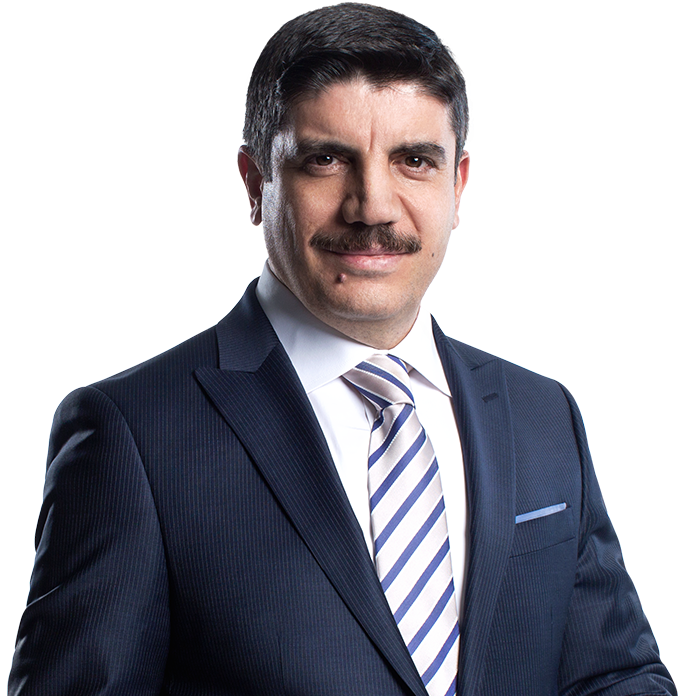2015 was the centenary of very important incidents. World War I, which began in 1914 and lasted four years, deeply affected both the history and sociology of societies and the fundamental dynamics of international politics, and continued to shape it in the following period, too.
1915 was a rough year for the Ottoman Empire, which was also a party in this war. There were tragic incidents like the failure of the Channel Movement, Sarıkamış Movement and the Çanakkale Wars, also known as the Gallipoli War. However, there are two big incidents that took place within this year, which was frequently dwelled upon in the following periods.
Also, 2016 will be the centenary of another major incident that emerged in this war atmosphere and was affective to a degree in shaping the following period. The document that was prepared on May 9-16 as a result of the exchange of notes, also known as the Sykes-Picot Agreement, was stipulating the distribution of Middle Eastern lands belonging to the Ottoman Empire among the contracting parties. The agreement bears the name of the two diplomats who carried out the negotiations, in other words, Sir Mark Sykes and George Picot. Hence it seems like the U.K. and France were the only parties to the agreement in question. Whereas, there was one other party to the agreement, who would withdraw from the agreement in 1917: The Russian Tsardom.
The interesting aspect of this is that while the agreement in question was being formed, the U.K. was developing completely different relations over the Arab world, making moves that would push the Ottoman Empire into a tight corner. The U.K. which built a consensus with Sharif Hussein right before the Sykes-Picot Agreement, had promised to establish a state for Sharif Hussein in a region that includes Syria, but does not cover Lebanon.
When the Russian revolution happened in 1917 and after taking over the power the Bolsheviks exposed all diplomatic correspondences of the tsarist Russia, Sharif Hussein and the other insurgents, who rebelled against the Ottoman Empire, in other words, against the caliph, were in great shock. It is a very interesting coincidence that 100 years after the agreement now, on the lands subject to the agreement, there is an attempt to make a new equation in which Russia is also included; we are headed to a new war of sharing. A century later, at this stage of the history of international affairs, it is being reformed once again in different bodies, yet similar in content.
Frankly, 100 years ago, Russia was again the weak link in this war of sharing as it is today. The Russian Tsardom and its successor, the USSR, which was able to achieve affective positions in regional policy with interventions in the fields of crises created by the conjuncture, lost their affective positions in the reason as the crises reached a solution. Russia's latest active intervention in Middle Eastern policies came with the void caused by the civil war in Syria. However, since this time Russia does not want to withdraw from the region after the crisis eased in some way, they are fortifying in Syria.
The U.K. had transferred its hegemonic connections in the region to the U.S. after World War II. After World War II, the U.S. became one of the integral parts of the region's politics. It tried to strengthen its position through direct intervention during the invasion of Iraq, but just as its “social engineering” approach toward the region's sociology made it impossible to achieve the result it wanted, it also paved the way for the developments taking place today. A brief study on the region shaped by the terrorist Islamic State of Iraq and the Levant (ISIL), and the sociology on which this region is based, will lead to a sounder analysis of the current process.
Hence, the point reached is the Syrian crisis. The U.S.'s hesitant and foreign policy regarding the resolution of this crisis, has led us to a human tragedy taking place in parallel with the internationalization of the problem.
U.S. President Barack Obama who is failing the test in this process, does not want to take a risky step in Syria with approximately one year left for the end of his term. It is certain that Obama is handling the Syria crisis very badly, however, making so much room for Russia in the region brings to mind various questions. Perhaps this is all happening as a result of a process that Obama isn't able to stand against either. To be more clear, are certain circles in the U.S. making room Russia on purpose, in order to determine the policies of the next couple of decades?
The answer to this question might also show how the next couple of years will shape. The U.S.'s arms investments in Europe, its military investments in the Asia-Pacific region, the withdrawal of the majority of conventional forces to the Asia-Pacific, were indications that the U.S. is in the process of building a new defense strategy.
Indeed, Russia was a good enemy profile for the U.S.'s public opinion. The prejudices from the USSR period could be convenient in a new battle the U.S. may attempt. It was thought that the Russia issue, which Western countries had difficulty positioning within the system 100 years ago, had ended with the end of the Cold War. At the point reached, it seems the contracting parties of the Sykes-Picot Agreement have somehow gathered once again in Syria. Will this lead to a new Sykes-Picot or are there other plans in Syria's backstage? This is the real question that will allow us to see the reality we are living.




















